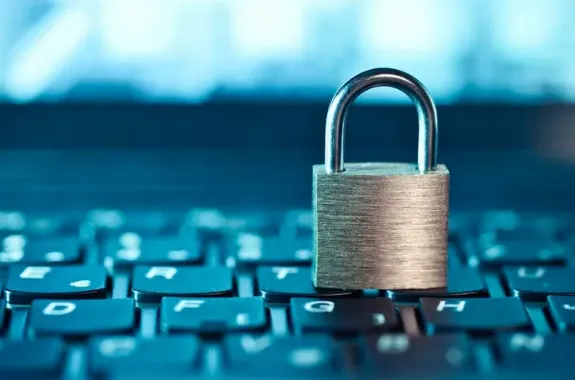In today’s interconnected and fast-paced business environment, ensuring robust company security is more crucial than ever. Protecting your assets—both physical and digital—is not just about preventing theft or cyber-attacks; it’s about safeguarding your company’s reputation, operations, and ultimately, its future. Here’s a comprehensive guide on strategies to bolster your company’s security framework.
Contents
- 1 1. Risk Assessment and Management
- 2 2. Physical Security Measures
- 3 3. Cybersecurity Protocols
- 4 4. Employee Awareness and Training
- 5 5. Incident Response Planning
- 6 6. Vendor and Supply Chain Security
- 7 7. Physical Asset Protection
- 8 8. Compliance and Regulatory Standards
- 9 9. Continuous Monitoring and Improvement
- 10 10. Crisis Communication
- 11 Conclusion
1. Risk Assessment and Management
Before implementing security measures, conduct a thorough risk assessment. Identify potential vulnerabilities in your physical premises, information systems, and operations. Assess the likelihood and potential impact of various threats, including cyber-attacks, data breaches, vandalism, and internal risks such as employee negligence or misconduct. This assessment forms the foundation for tailored security strategies.
2. Physical Security Measures
Securing physical assets begins by regulating access to your premises. Introduce robust access control systems like electronic key cards and biometric door locks, and deploy security guards where needed. Safeguard critical areas with surveillance cameras and alarms. Regularly assess and enhance these systems to stay ahead of advancing threats and technological changes.
3. Cybersecurity Protocols
Cyber threats pose significant risks to modern businesses. Develop and enforce stringent cybersecurity protocols, including strong password policies, regular data backups, and encryption of sensitive information. Train employees on recognizing phishing attempts and other cyber-attack vectors. Invest in robust antivirus and intrusion detection systems to detect and mitigate threats promptly.
4. Employee Awareness and Training
Employees are often the first line of defense against security breaches. Conduct regular security awareness training sessions to educate employees about security policies, procedures, and best practices. Encourage a culture of vigilance and responsibility for security among all staff members. Ensure that employees understand the importance of adhering to security protocols in their day-to-day activities.
5. Incident Response Planning
Despite preventive measures, incidents may still occur. Develop and regularly update an incident response plan that outlines clear steps to take in the event of a security breach, whether physical or digital. Designate a response team and establish communication protocols to ensure swift and effective response and recovery. Conduct drills and simulations to test the effectiveness of your incident response plan.
6. Vendor and Supply Chain Security
Extend your security measures to include vendors and partners who have access to your company’s systems or facilities. Implement stringent security requirements in vendor contracts, including data protection standards and compliance with your security policies. Regularly audit vendor security practices to mitigate risks arising from third-party relationships.
7. Physical Asset Protection
Beyond premises security, safeguard physical assets such as equipment, inventory, and intellectual property. Use asset tagging and tracking systems to monitor and manage the movement of valuable assets. Implement physical barriers, alarms, and CCTV surveillance in storage areas to deter theft and unauthorized access.
8. Compliance and Regulatory Standards
Stay informed about industry-specific security regulations and compliance requirements. Ensure your security practices align with relevant standards such as GDPR, HIPAA, or PCI-DSS, depending on your industry and geographic location. Regularly conduct audits to verify compliance and address any gaps promptly.
9. Continuous Monitoring and Improvement
Security threats evolve rapidly, requiring proactive monitoring and continuous improvement of your security posture. Implement real-time monitoring systems to detect and respond to suspicious activities promptly. Conduct regular security assessments and penetration testing to identify vulnerabilities and weaknesses in your security defenses.
10. Crisis Communication
In the event of a security incident, effective communication is key to managing the aftermath and maintaining stakeholder trust. Develop a crisis communication plan that outlines procedures for notifying affected parties, including employees, customers, suppliers, and regulatory authorities. Ensure transparency and provide timely updates throughout the incident resolution process.
Conclusion
Protecting your company’s assets goes beyond installing locks and firewalls—it requires a proactive and comprehensive approach to security. By integrating robust physical security measures, cybersecurity protocols, employee training, and incident response planning, you can create a resilient security framework that safeguards your business from diverse threats. Stay vigilant, adapt to emerging risks, and prioritize security as a fundamental aspect of your company’s operations.
Implementing these strategies will not only protect your assets but also enhance your company’s reputation as a trustworthy and secure business entity in today’s competitive landscape. Take proactive steps today to shield your assets and ensure the long-term success of your business.









